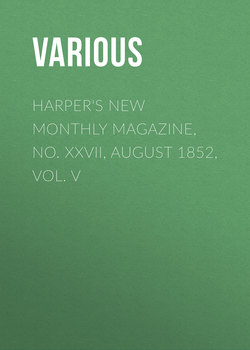Читать книгу Harper's New Monthly Magazine, No. XXVII, August 1852, Vol. V - Various - Страница 23
MEMOIRS OF THE HOLY LAND
THE DISPUTE WITH THE BASILIANS
ОглавлениеA society of monks once established, depends of course for its continuance and prosperity on external additions, and not on any internal growth; for since celibacy is the rule of all monastic orders, there can not be in such communities, as in the case of an ordinary hamlet or village, any natural sequence of generations. A man is never born a monk: so that monasticism has at least one of the marks and characteristics of a monstrosity. It does not propagate its kind.
Notwithstanding this, however, the institution on Mt. Carmel gradually increased. Accessions were made from time to time to the numbers of the monks, until at length the order became so numerous that several branch institutions were established in different parts of Europe, and the Carmelites became very generally known throughout the Christian world. We can not here, however, go away from the mountain to follow the society in its general history, though we will digress from our immediate subject so far as to give a brief account of the singular controversy which arose in subsequent years between the Carmelites and the Basilians, a controversy which not only exhibits in a striking point of view some of the peculiar ideas and religious usages of the times in which it occurred, but illustrates certain important principles in respect to the nature of religious controversy, that are applicable to the disputes of every age. The question in this case related to the costume in which the prophet Elijah was represented in a certain picture belonging to a church which the Basilians built near Messina, in the island of Sicily. The church was built in the year 1670, and the open controversy arose then; but the origin of it may be traced to a period antecedent to that time. It seems that in 1080, six hundred years before the dispute to which we are referring commenced, a certain Sicilian potentate built a church near Mt. Etna, in honor of the prophet Elijah, as a token of his gratitude to the prophet for appearing to him in a visible form at one time when he was involved in very imminent danger, in his wars with the Saracens, and for interposing to protect him. He also built a monastery in connection with the church, and established a society of Basilian monks in it.
It seems that at the time when the church and monastery were built, a picture of the prophet Elijah was painted and hung in the church, where it remained without exciting any question, for six hundred years.
At length at the expiration of that time the buildings of the establishment having become very old, and being often greatly damaged, and the lives of the inmates seriously endangered by the shocks of earthquakes and the volcanic eruptions to which their situation so near to Mt. Etna exposed them, it was determined to remove the institution to another place, several miles distant from its original location, where the ground was more secure. The old picture of Elijah was however found to be too much decayed to be removed. A careful copy of it was therefore made, the artist taking care to transfer, as nearly as possible, to his copy, both the features and the costume of the original. The following engraving is a faithful representation of this portrait and of the dress which became the subject of the dispute, except of course that the colors are not shown. The shoulders are covered with a cloak which in the painting was red. Beneath the cloak was a tunic, formed of the skin of some animal, which descended to the knees. There were sandals on the feet. There was a sword tipped with flame in the hand, and the head was covered with a red cap trimmed with ornaments of gold.
This painting in its original state had hung in its place in the old convent during the whole six hundred years without attracting any special notice; but when the copy was made and hung up in the new convent, it became an object of greater attention, and the Carmelites who saw or heard of it were much displeased with the costume, inasmuch as it was not the costume of their order. The painting by exhibiting the prophet in such a dress, seemed to deny that Elijah had been a Carmelite, and to claim him as belonging to some other order. They complained to the Basilians of the injustice done them, and demanded that the obnoxious costume should be changed. Finding, however, that their complaints and remonstrances were unavailing, they appealed to the Archbishop of Sicily, praying him to interpose his authority to redress the injury which they were suffering, and to compel the Basilians to take down the painting in question, the display of which was so dishonorable to the ancient order of Mt. Carmel. The Basilians in reply alleged that the costume of the portrait was no innovation of theirs, and they were not responsible for it at all. The work, they said, was a faithful copy of an ancient painting that had hung for six hundred years, unquestioned and uncomplained of, in their former monastery, and that they could not give up the ancient traditions and relics of their institution; and they were especially unwilling to consent that the prophet Elijah should be represented in their church in a Carmelite dress, since that would prejudice the ancient claims of the Basilian order.
